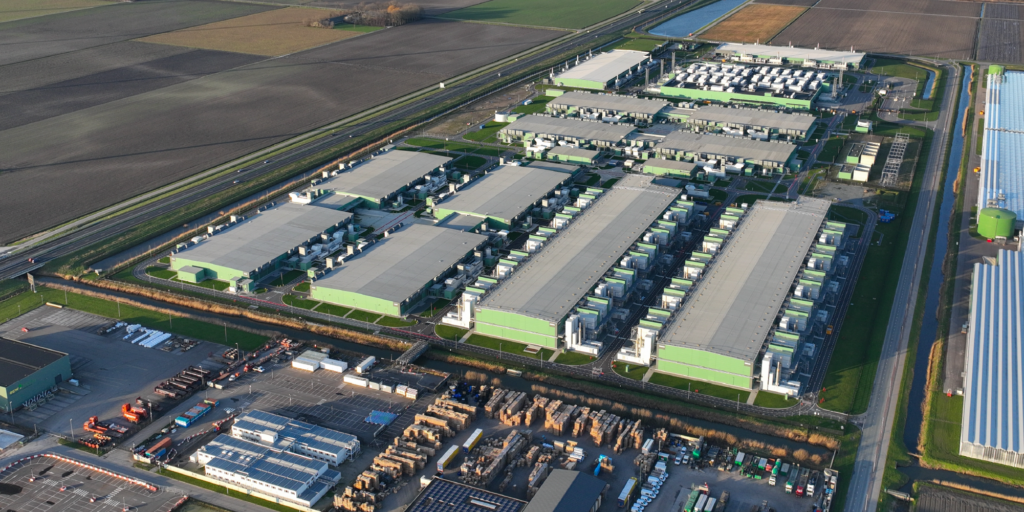— 12 min read
8 Key Types of Construction Contracts Explained
Last Updated Mar 6, 2025
Last Updated Mar 6, 2025

In general, there are five common types of construction contracts:
- Lump sum (or fixed price)
- Time and materials (T&M)
- Unit price
- Guaranteed maximum price (GMP)
- Cost-plus
Each of these contract types is suitable for some projects and not others, and each has both advantages and disadvantages for the various stakeholders involved in a construction project. Notably, many projects involve different contract types for different phases or aspects of the job. Learning more about every type of construction contract can help you find the right terms to manage financial risk on your project.
Table of contents
Construction Contracts Overview
Every construction project has unique challenges, and different types of contracts lend themselves to various situations.
| Contract Type | Definition | Description |
| Lump sum | Parties agree on a fixed price for the entire project or phase. | Best for projects with a well-defined scope of work. |
| Time and materials | Contractors bill for all material costs and labour at an hourly rate. | Helpful for projects with uncertain scope. |
| Unit price | Work is divided into fixed cost units, and contractors bill for each unit separately. | Useful for projects with an uncertain number of repeatable elements. |
| Guaranteed maximum price (GMP) | Contract sets an upper limit for costs, and the GC or construction manager absorbs additional costs. | Reserved for projects with known scope and challenges. |
| Cost-plus | Contractors are paid for project costs plus a predetermined profit margin. | Beneficial for contractors on projects with many potential change orders. |
| Integrated project delivery (IPD) | Project parties manage the design and construction risks as a team. | Ideal for teams who want to focus on innovation and collaboration. |
| Design-Build | Simultaneously addresses design and construction costs and helps to avoid disputes between the designer and the builder. | Popular with owner-developers who want to accelerate project delivery and streamline processes. |
| Incentive Construction Contracts | Incentivizes builders by offering an agreed-upon price for achieving certain time or cost savings. | The price can be set using a definitive line or on a sliding scale, depending on the incentive. |
Understanding the risks and benefits of each contract type can help you make the best choice for your project. Ultimately, selecting the right contracts for your projects is an important part of construction financial management, since contracts directly affect your expenses, revenue, and profit.
1. Lump Sum Contracts
Lump sum contracts, also called fixed price contracts, establish a fixed price for all of the materials and labour required to complete a job.
This is the most basic and common type of construction contract. Lump sum contracts work especially well for projects with a well-defined scope of work, which enables contractors to make an accurate estimate of the project’s cost.
While lump sum contracts are extremely useful, they do have drawbacks.
| Advantages | Disadvantages |
| May lead to higher profit margins. A well-calculated bid can cover all project costs and leave a healthy profit margin. | Potential incentive to cut corners. Since the final cost is set in stone, contractors may wish to cut corners in order to increase their profit margin. |
| Easily compare bids. With fixed total costs, property owners can choose among bids with ease. | Costs can cut into profits. If contractors are not careful about managing costs, their profit margin can disappear. |
Lump sum contracts are helpful for property owners during the bidding phase, but during construction, owners have to be mindful that the head contractors are incentivised to come in under budget. For that reason, many owners choose to hire a construction manager as their representative on the job site.
Lump sum contracts also benefit head contractors, especially those who create accurate estimates and bids. With a fixed total cost for the project, GCs who manage their costs during construction can end up with a robust profit margin.
2. Time and Materials Contracts
Time and materials contracts — also called T&M contracts — reimburse contractors for material costs and pay a fixed daily or hourly wage for labour costs.
This type of contract offers additional protection for contractors, who have greater assurance that their costs will be covered throughout the project.
Notably, material and labour costs have several additional factors built in to the contract:
- Materials costs include the cost of the materials themselves, the freight charges, and a markup charge (typically between 10 and 30 percent).
- Labour costs include the base pay, overhead and administrative costs, and a profit margin. This is called the loaded labour rate.
Time and materials contracts can be beneficial in many situations, but it’s important to also understand the risks of this contract type.
| Advantages | Disadvantages |
| Mitigates risk for head contractors: Because the owner pays for actual costs, the GC can manage delays and changes. | Increases risk for owners: Unless a “not-to-exceed” clause is built into the contract, owners face unknown and potentially high costs. |
| Profit is predictable: Markup is built into both material and labour costs, so the GC knows their profit margin. | Tracking costs can be burdensome Contractors face the administrative challenge of tracking and submitting labour hours and material costs. |
For many property owners, a T&M contract is less appealing than a fixed price contract because the total cost is unknown at the start of construction. That said, many time and materials contracts include “not-to-exceed” clauses that set a maximum price or a maximum number of labour hours. These clauses can create incentives for the head contractor to complete work in a timely manner and under budget — otherwise they’ll cut into their own profit margin.
For contractors, a T&M contract relieves the burden of creating a perfect estimate. All construction projects involve risks, unknown variables, delays, changes, and more. With a time and materials contract, contractors mitigate their own risk with the assurance that a project will stay profitable even when it encounters roadblocks. That said, the profit upside for this type of contract may be more limited as well.
Unlock the Key to Smarter Project Management
Download our free guide to learn how construction management software can improve project efficiency.

3. Unit Price Contracts
Unit price contracts set a fixed price for a distinct, repeatable aspect of a project, which is defined as a “unit.”
For example, a contractor building 20 kilometres of highway may sign a unit price contract, with each kilometre of highway representing a unit. The same labour and materials will be used for each kilometre of road, so the contractor bills for each of those units at a fixed price. If the scope of the project changes — for instance, if additional sections of highway need to be built — the contractor simply bills for additional units upon completion.
Unit price contracts are especially helpful for situations where it’s unknown how many units of work will be needed. For example, a contractor may remove dirt during site preparation, billing for each metre of soil removed as a unit with a fixed cost.
Importantly, the unit price includes all of the contractor’s costs — labour, materials, overhead — and a markup for profit.
| Advantages | Disadvantages |
| Simplifies tracking and billing. Rather than billing for labour hours or materials, contractors simply bill for each unit. | Poor pricing can sink contractors. While unit price contracts offer flexibility, a poorly priced unit can destroy contractor profit. |
| Supports flexible projects. Projects that have an unknown scope or duration match well with unit pricing. | Owner does not know the total cost. Although property owners will know the unit cost, they may not know the total number and units required. |
For property owners, unit pricing has the advantage of simplifying the overall contract negotiation. However, unit pricing can also obscure the full scope of a project, so owners need to be mindful that they understand roughly how many units are likely to be billed.
Contractors benefit from unit pricing since they have less administrative overhead by billing for units rather than labour hours or materials. However, contractors using unit pricing must be careful to ensure their prices cover all of their costs (including overhead) and provide a profit.
4. Guaranteed Maximum Price (GMP) Contracts
A guaranteed maximum price (GMP) contract sets a maximum project cost for the property owner. Any costs that exceed the maximum price are the responsibility of the head contractor, who will see their profit margin cut as a result.
With a GMP contract, a head contractor uses a schedule of values to estimate the total project cost. In addition to these direct costs, the contractor will also include overhead costs and profit. With this type of contract, the head contractor acts as a construction manager at risk (CMAR). The CMAR oversees the project from start to finish, and they are at risk of paying out-of-pocket for going over budget.
| Advantages | Disadvantages |
| Reduced risk for owners. Owners know the maximum cost before a project begins. | Risk of cost overruns for GC. The GC must carefully price the project or risk paying out of pocket. |
| Simplifies project for GC. Project plans are often finalised before construction, so change orders are minimised. | Administrative cost to accounting transparency. Contractors must maintain intricate accounting records for owners to review as part of the contract. |
For owners, GMP projects avoid concerns about going over budget since the maximum price is set before construction begins. Additionally, most GMP contracts include a stipulation that owners can review the financial records of the contractor, so owners can audit the project costs to ensure fairness.
For contractors, GMP projects are often simpler since many project details are worked out ahead of time, reducing the need for change orders. However, contractors also face two significant risks with guaranteed maximum price contracts: cost overruns and administrative burden.
Without a very accurate schedule of values, contractors risk setting the GMP too low and paying out of pocket for project costs. Additionally, the open book clauses require a high degree of financial transparency that adds to the project’s administrative costs.
5. Cost-Plus Contracts
A cost-plus contract reimburses contractors for construction costs — labour, materials, and equipment — along with a predetermined markup rate or fixed fee.
With cost-plus contracts, both direct and indirect costs are covered, and markup is typically calculated as a specific percentage of the total costs. Direct costs are those specifically related to the project (like labour, materials, or equipment just for that job) while indirect costs are the overhead required to keep the business running (like insurance, office space, and software subscriptions).
While all direct costs are covered in a cost-plus contract, indirect costs are usually covered on a percentage basis, with the exact amount varying according to the length and scope of the project.
Notably, a contractor cannot simply bill for costs without any justification. Before the project begins, the contractor provides the owner with an estimate of costs. The contract may also stipulate a maximum point beyond which costs will not be reimbursed.
| Advantages | Disadvantages |
| Lower risk for contractors. Contractors know their costs will be reimbursed even if prices rise. | Project cost is unknown. The owner does not know the full cost ahead of time. |
| Incentives to manage costs. Both owners and contractors are incentivised to manage the project costs. | Meticulous expense tracking. Contractors must carefully track expenses to submit for reimbursement. |
For owners, cost-plus contracts leave some uncertainty about the total project cost, but that can be remedied with a cap on cost reimbursement. Additionally, some cost-plus contracts include performance bonuses or other incentives that encourage contractors to come in ahead of schedule and under budget.
For contractors, cost-plus contracts reduce risk and uncertainty since they’ll be reimbursed even if prices on materials or labour rise. However, contractors must be careful to calculate their indirect costs correctly to ensure that their profit isn’t ultimately used to cover overhead.
6. Integrated Project Delivery Contract
Typical construction contracts aim to transfer and avoid risks from each party onto each other. With an integrated project delivery (IPD) contract, project parties manage the design and construction risks as a team. IPD contracts are for teams who want to focus on innovation and collaboration.
When parties work together and share ownership to achieve the desired rewards, there is a stronger sense of teamwork.
7. Design-Build Contract
A design-build contract simultaneously addresses design and construction costs and helps to avoid disputes between the designer and the builder, which can speed up the delivery.
Under this type of contract, the construction process begins before the final design is even completed. This contract type is popular with organisations that want to accelerate project delivery, lean into the benefits of collaboration, and streamline processes.
8. Incentive Construction Contracts
This type of construction contract incentivizes builders by offering an agreed-upon price if the delivery of the project was met by a certain date, incurred lower costs or reached stages by a certain point.
The price can be set using a definitive line or on a sliding scale, depending on the incentive.
Choosing the Right Contract Type
There is no one-size-fits-all contract for construction, and there isn’t a perfect contract for any situation. That said, there are guidelines you can follow to choose a contract type that is likely to match well with a project.
Here are a few things to keep in mind:
- If your project has a well-defined statement of work, a lump sum contract is a straightforward solution since contractors should be able to accurately estimate costs.
- If the project scope is unclear, contractors can bid with time and materials contracts to mitigate risk.
- If the project involves repeated work, unit price contracts offer simplified pricing and the ability to easily expand the project scope.
- If the project has a fixed budget, guaranteed maximum price contracts reduce the owner’s financial risk.
- If the project involves uncertainty in estimating, a cost-plus contract can get the project off the ground quickly with limited risk for contractors.
It’s possible to use different contract types for each phase or aspect of a larger project, and many contracts include overlap among several types. For instance, it’s common for cost-plus projects to include a maximum price.
Regardless of the type of contract you work under, take care to read the conditions carefully. Understanding the contract is one of the most important steps to mitigating risk on a job.
Categories:
Tags:
Written by
Emma De Francesco
18 articles
Emma is currently Strategic Product Consultant at Procore where she loves partnering with clients to help them achieve the best possible results. She has worked as a Project Manager in previous roles, responsible for overseeing small to medium-sized projects across various sectors including commercial, health and lifestyle, retail, government and hotels. Throughout these projects, she managed everything from project costs, program and quality & safety, to design management, procurement, and authority approvals.
View profileExplore more helpful resources

Cutting Delays and Costs: Proven Ways to Boost Construction Site Efficiency
On-site efficiency separates profitable construction projects from those plagued by delays and budget overruns. In Australia’s construction landscape—where supply chain disruptions, skilled labour shortages, and increasingly strict regulations are the...

Why Communication is the Hidden Risk Factor in Construction
Construction is a high-risk industry—not just financially, but physically and reputationally. While significant effort goes into mitigating physical hazards, ensuring financial control, and protecting contractual interests, one of the biggest...

Data Centre Construction: Building the Cloud
As the demand for digital data increases, so does the demand for the physical structures and equipment needed to store and process data. Data centres are facilities that house computer systems...

From Forming to Performing: Mastering Communication for a Winning Construction Culture
The way people communicate on a construction site is like the reinforcing steel in a slab—it holds everything together and strengthens the team. Clear, effective communication is essential for building...